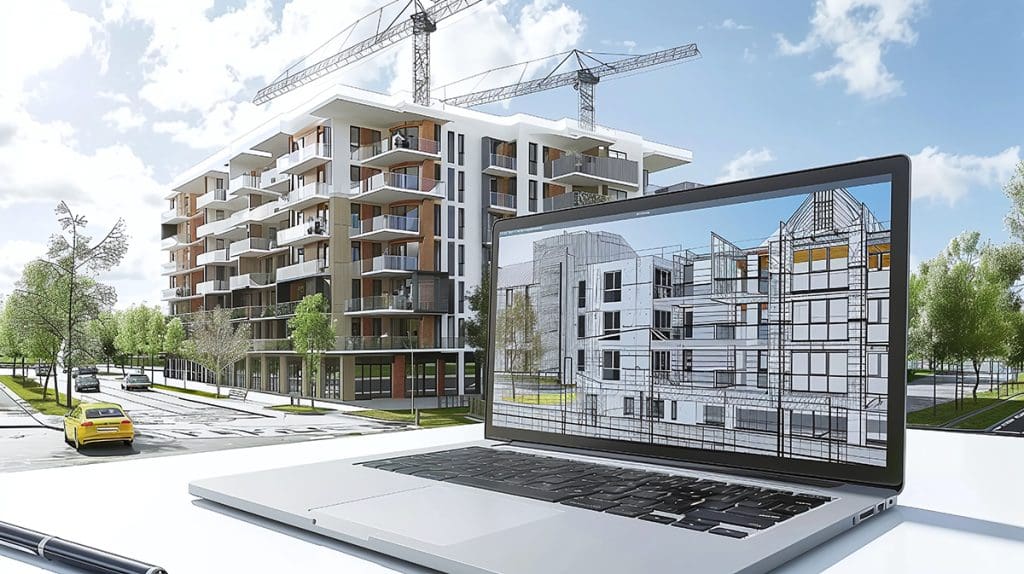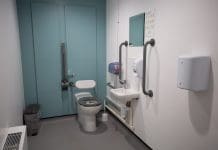BIM, IPD and field management software are all key to enhancing collaboration in construction, as Re-flow explores the communication challenges that could be hold your business back
Construction managers shouldn’t be at the mercy of poor communication or lack of collaboration, yet it is a common problem in the industry: different parts of the business or different project stakeholders frequently operate in isolation without sharing data or considering how their individual goals impact the project as a whole. They focus on getting their work done.
A lack of collaboration weighs down construction companies and slows growth
When there’s a breakdown in communication between different teams or stakeholders, projects can experience delays, cost overruns, and quality issues. Here are some specific examples:
- Missed deadlines: A site manager might push forward without knowing a key material delivery has been delayed, leading to an entire day’s work being wasted.
- Increased costs: A lack of communication between procurement and the site team can result in ordering the wrong materials, causing costly rework and waste.
- Quality issues: Without proper coordination, subcontractors may install components out of sequence, resulting in defects that require expensive fixes.
- Reduced productivity: If an equipment breakdown isn’t promptly reported to the maintenance team, it can lead to significant downtime and a backlog of unfinished tasks.
- Diminished safety: Failure to share updated risk assessments across teams can lead to unsafe work practices, putting workers at risk and leading to potential legal liabilities.
- Stalled Growth: When teams are constantly firefighting due to these issues, they miss opportunities for post-project analysis, which could drive improvement and future growth.
Pooled resources should help ‘mould stronger relationships between separate team members’ and improve the quality of work for everyone. But ‘collaboration needs technology’.
Software solutions for poor collaboration

Building Information Modelling (BIM)
Building Information Modelling is a digital representation of a building project that integrates data from all stakeholders, providing a comprehensive view of the project throughout its lifecycle. This centralisation of information is crucial for improving collaboration and communication across teams.
In practice, imagine a large-scale hospital construction project. The architectural team uploads the latest 3D models into BIM, which can be accessed by engineers, contractors, and even suppliers. When the structural engineer needs to make changes to the steel framework, the modifications are immediately visible to the architects and contractors, ensuring everyone is working from the same updated plans.
This visibility allows the project manager to foresee potential clashes, such as the placement of HVAC systems interfering with electrical wiring, before they become costly on-site problems.
Benefits of BIM:
- BIM provides a centralised platform where all stakeholders – architects, engineers, contractors, and clients – can access real-time updates, reducing the risk of miscommunication.
- By allowing project teams to visualise the building in 3D, BIM helps in identifying spatial conflicts early in the design phase, avoiding costly rework during construction.
- BIM ensures that everyone involved is working from the most current information, which reduces errors and prevents the duplication of efforts.
- Through detailed cost tracking, BIM allows teams to monitor expenses and identify cost-saving opportunities, such as optimising material use or adjusting timelines to avoid peak pricing periods.

Integrated Project Delivery (IPD)
Integrated Project Delivery is a collaborative approach that involves all stakeholders – owners, designers, contractors, and even key suppliers – working together from the project’s outset to achieve shared objectives. This approach is particularly effective in enhancing communication and aligning goals across the team.
For example, in a mixed-use development project, the IPD approach would bring together the developer, architect, construction manager, and key subcontractors from day one. During the initial meetings, all parties agree on shared goals, such as staying within budget, achieving BREEAM certification, and meeting a tight deadline for the grand opening.
As a result, the architect and contractor collaboratively design a construction sequence that prioritises early completion of the retail space to generate revenue while other parts of the project are still in progress. This early collaboration helps to identify potential issues – such as delays in material delivery or design changes – early enough to mitigate them without impacting the overall schedule.
Benefits of IPD:
- IPD fosters a collaborative environment where all stakeholders work towards common objectives, significantly improving communication and reducing the likelihood of misunderstandings.
- Early involvement of all parties allows for the proactive identification of potential problems, such as supply chain disruptions or design flaws, which can be addressed before they cause delays.
- By identifying risks early in the project lifecycle, such as unforeseen ground conditions or regulatory changes, IPD allows teams to develop mitigation strategies, reducing the overall project risk and improving outcomes.
Re-flow Field Management Software
Re-flow is an all-in-one field management software solution designed to enhance communication, collaboration, and efficiency within construction companies. It unifies office and site teams and gives managers complete oversight of operations by digitising and simplifying everyday workflows that ensuring smooth collaboration across teams.
For example, if an operative submits an in-app form indicating that a piece of equipment is faulty, an automation can be set-up to immediately notify the transport manager to address the issue. Simultaneously, the system would then prevent the scheduling of that equipment for future jobs until it’s repaired, ensuring no downtime on site.
Re-flow streamlines collaboration in the background of day-to-day operations, making it a powerful tool for maintaining productivity and safety. Key features include:
- Configurable forms with the ability to make fields mandatory. Information must be completed before work can be started which ensures compliance.
- Automated notifications ensure quick communication across teams, reduce and in some cases eliminate manual processes, and when critical issues arise, such as faulty equipment, fostering swift collaborative problem-solving.
- Two-way communication (app to dashboard) allows instant updates and keeps all project stakeholders aligned, reducing misunderstandings, and ensuring everyone is on the same page.
- A knowledge base where any important documents, manuals, videos and more can be uploaded and viewed by relevant team members, improving information sharing and reducing miscommunication.
- Tasks can be assigned to specific operatives in a job pack which can be monitored, ensuring that team members can work together efficiently and meet deadlines.
By utilising BIM, IPD, and field management software like Re-flow, construction companies can create a more collaborative and efficient project environment, ultimately leading to better outcomes and more efficient jobs.














